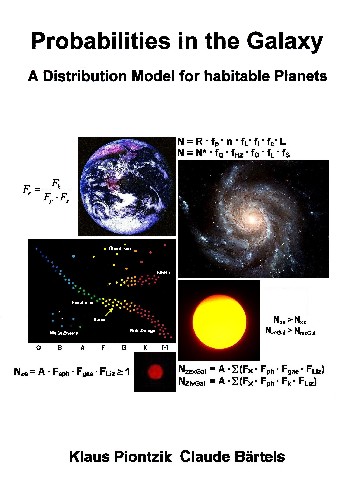| The question that
arises here is: How many stars do you have to examine in
order to find an "Earth 2"? Two cases can be
distinguished, since the probability Fe,
for earth-like planets, can be at least 0.01 and at most
0.1. CASE 1 (Fe1 = 0.1) The probability of finding an "Earth 2" among habitable planets: Fgae1 = Fg·Fa·Fe1 Fgae1= 1,212:3,286 · 51:130 · 1:10 Fgae1= 0.014,469 = 1:69 That means: among 69 habitable planets, an "Earth 2" can be found. To find these habitable planets, about 4,140 solar-like star systems with planets would have to be studied. That's about 289,800 sun-like star systems. This would require a total of 1.035 million star systems to be investigated with the Kepler telescope. This is about 6.9 times the amount of stars examined so far. Consequence 1: Among about 1.05 million star systems there is probably a system that contains an "Earth 2". This corresponds to 6.9 times the number of stars that have been examined by the Kepler telescope so far. CASE 2 (Fe2 = 0,01) The probability of finding an "earth 2" under habitable planets is: Fgae2 = Fg·Fa·Fe2 Fgae2= 1,212:3,286 · 51:130 · 1:100 Fgae2= 0.001,446,9 = 1:691 This means: among 691 habitable planets an "Earth 2" can be found. To find these habitable planets, you need to study 41,460 solar-like star systems that have planets. Thus, 2,902,200 sun-like star systems and a total of 10.365 million star systems would have to be observed and analysed. That is 69 times the amount of stars examined so far. Consequence 2: Among about 10.365 million star systems there is probably a system that contains an "Earth 2". This is 69 times the number of stars that have been examined by the Kepler telescope so far. Both cases combined result in the following statement:
|

|
176 sides, of them 64 in Color 76 pictures 11 tables Production and publishing: Books on Demand GmbH, Norderstedt ISBN 9-783-7528-5524-1 Price: 22 Euro |
|